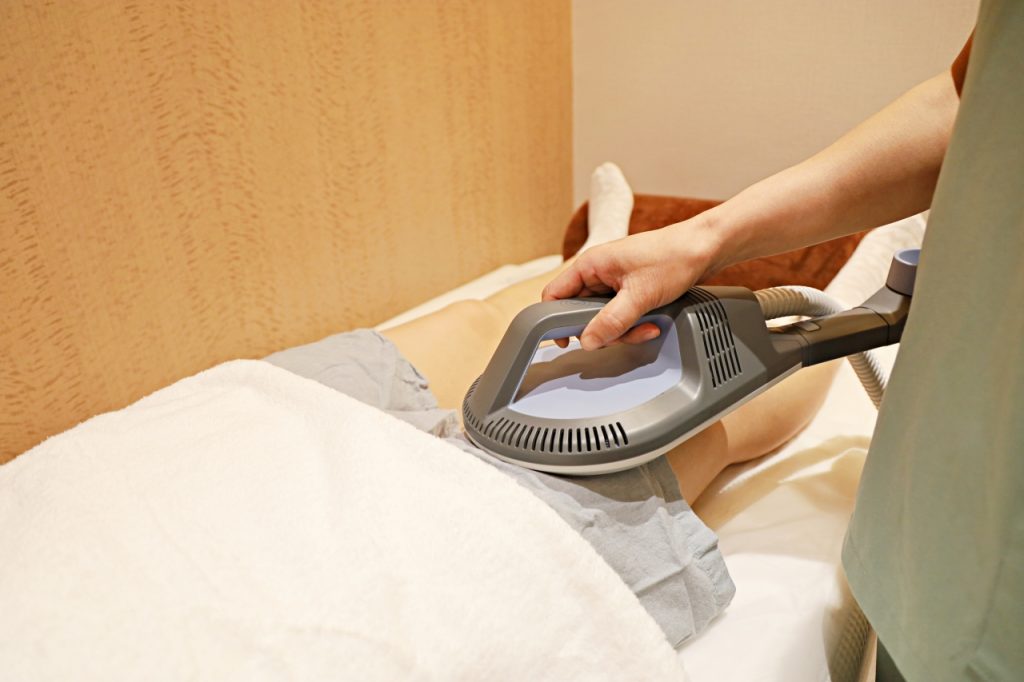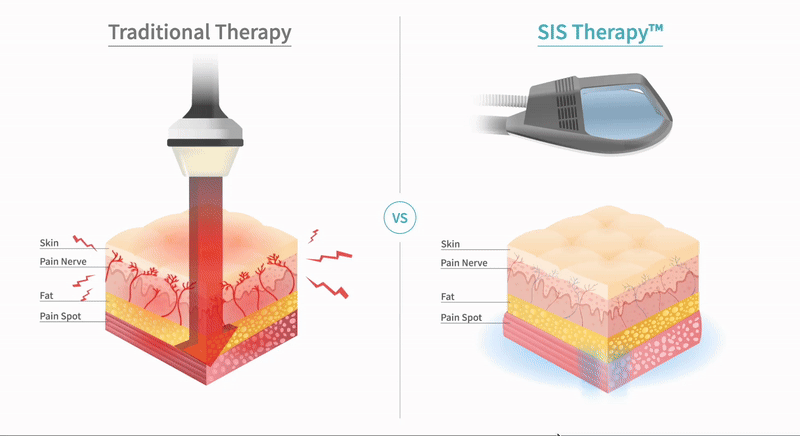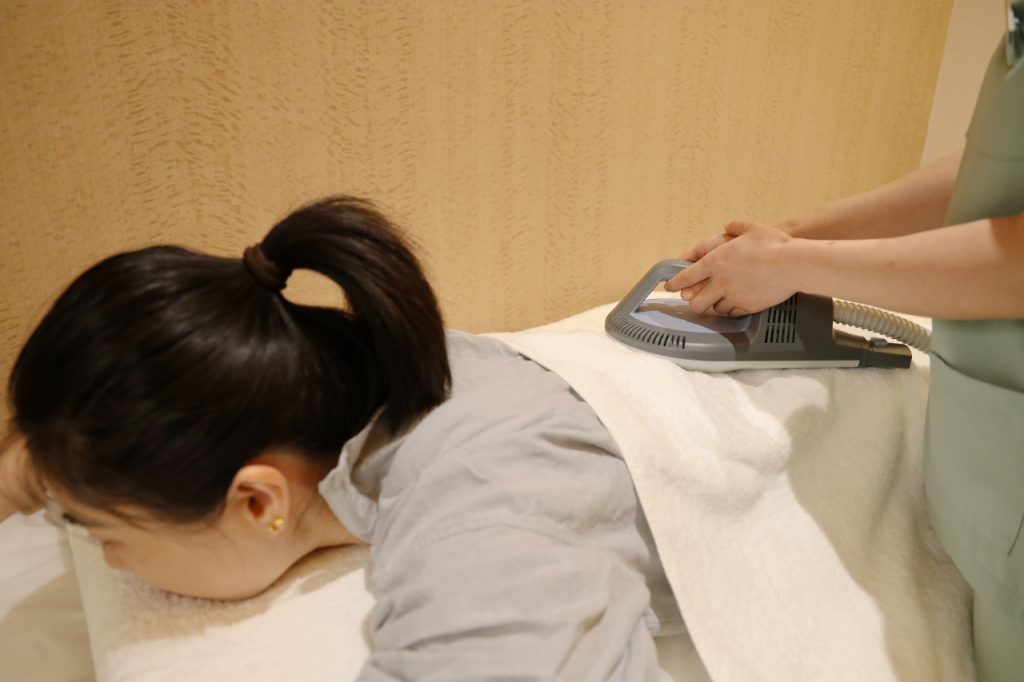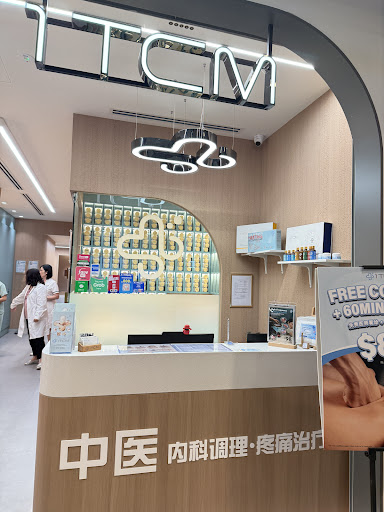In a world that puts a lot of strain on our bodies, discomfort can appear gradually and even silently. A knee that can’t bend without pain. a mid-reach locking shoulder. A shallower breath than it ought to be. These are not merely symptoms; they are indicators of a body in crisis, of systems that have lost their ability to operate normally.
What is the Super Inductive System (SIS)?

A medical technology called the Super Inductive System (SIS) is made to provide concentrated electromagnetic stimulation at frequencies of up to 150 Hz and intensities of up to 3 Tesla. SIS stimulates the neuromuscular system to produce therapeutic muscle contractions by means of regulated electromagnetic pulses. These contractions have a function and are not random. They make muscles stronger. They relieve stress. They give you movement again.
And SIS does something much more important: it stops pain because it can depolarise neurones. SIS can help alleviate acute, subacute, or chronic discomfort that has persisted for years. The agony is not concealed by it. When it is safe to stop sending distress signals, it signals the nerves to halt.


How Does the Super Inductive System Work?

Fundamentally, the Super Inductive System stimulates the human body at the cellular and systemic levels by using quickly fluctuating magnetic fields. Natural physiological reactions are triggered by the electromagnetic field’s interaction with muscle and nerve tissues.
Key Mechanisms:
- Neuromuscular Stimulation: Enhances muscle strength and prevents atrophy by encouraging muscle contractions.
- Nerve Activation: Depolarises neuronal tissue to enhance nerve function and relieve pain instantly.
- Joint mobilisation: This successfully replaces manual therapy by causing repetitive contractions around joint capsules.
- Vascular and Metabolic Support: Promotes healing and recuperation by improving cellular metabolism and blood circulation.
Its sophisticated coil winding technique and proprietary cooling mechanism allow for steady SIS therapy delivery without overheating, ensuring patient safety and therapeutic efficacy.
Benefits of Super Inductive System (SIS)
Although it doesn’t have to be permanent, pain can be chronic. Three established neurophysiological theories of pain modulation serve as the foundation for SIS therapy. The treatment soothes the neurological system and lowers inflammation by using a frequency range that targets various forms of nerve activity. According to clinical research, patients can reduce their pain by up to 87%, often in a few of sessions.
1. Zarkovic D, Kazalakova K. Repetitive Peripheral Magnetic Stimulation as Pain Management Solution in Musculoskeletal and Neurological Disorders – A Pilot Study. International Journal of Physiotherapy. 2016; 3(6):671-675.SIS simulates manual treatment when joints feel locked, whether due to immobility, arthritis, or injury. It unlocks stiffness and restores mobility by causing the muscles around the joint capsule to contract rhythmically. No dragging, no pressuring. Just a gentle reminder of the body’s former movement.
SIS promotes bone healing from the very beginning of recuperation. It increases tissue metabolism, improves local blood flow, and promotes the development of cartilage and vascular callus. This enhances the quality of bone remodelling and expedites the healing process in a non-invasive and safe manner.
Neuromuscular tissue is the specific focus of SIS. Muscle weakness can be avoided and even reversed, regardless of the cause; age, trauma, or surgery. This is particularly important for people who have chronic immobility or during post-surgical rehabilitation. The muscle is retaught to contract, hold, and release with each pulse.
Following a brain injury, spasticity; an involuntary increase in muscle tone, occurs often. We see a significant decrease in spasticity levels after SIS therapy. According to clinical studies, post-stroke patients’ muscular tone improves by 63%. SIS helps patients walk more easily and freely after several treatments.
2. Prouza, O., Kouloulas, E., & Zarkovic, D. (2018). High-Intensity Electromagnetic Stimulation Can Reduce Spasticity in Post-Stroke Patients. International Journal of Physiotherapy, 5(3), 87-91.By activating the respiratory muscles, SIS therapy provides pulmonary rehabilitation for post-COVID patients experiencing breathlessness and diminished lung function. The treatment increases the ability to breathe by causing supramaximal contractions. According to a recent pilot research, regular use improved respiratory efficiency by 38%.
3. Silantyeva, E. S. (2020). The application of high intensity and low intensity magnetotherapy in rehabilitation of patients with COVID-19: a randomized controlled pilot study. Physical and rehabilitation medicine, medical rehabilitation, 2(4), 322-328.
The natural ageing process, menopause, and delivery all cause significant changes to women’s bodies. Urinary incontinence is one of the less talked-about yet very significant effects of these alterations. The pelvic floor muscles, which are frequently weak or disturbed, can be strengthened and retrained non-invasively with the use of the Super Inductive System (SIS). SIS produces contractions that enhance bladder control and restore muscular tone by focused electromagnetic stimulation. Without the need for surgery or recovery time, it enables women to reclaim their comfort and confidence in day-to-day living.

Who Can Benefit from Super Inductive System (SIS) Therapy?
- Acute and chronic pain
- Muscle weakness and atrophy
- Joint mobilization
- Spinal disorders (e.g: slipped disc, thoracic spine pain)
- Tendinopathies (e.g: patellar tendinopathy)
- Neuropathies (e.g: carpal tunnel syndrome)
- Nerve regeneration
- Spasticity and neurological impairments
- Breathing dysfunctions (especially post-COVID)
- Fracture support and healing
- Pelvic floor dysfunction and urinary incontinence

Trusted Reviews
I really look forward to my weekly sessions with her!
The clinic is clean and calming, and Coco always makes me feel well cared for. Highly recommend for mums-to-be looking for real relief during pregnancy!
Currently still continuing my weekly visit

The assistant Xiao Mei explained well for the bath as well! Attentive and been checking on us.
The entire process, from consultation to treatment, was smooth and pleasant. I highly recommend 1TCM to anyone seeking effective and professional Traditional Chinese Medicine care.
Friendly and pleasant staff .
Patient and knowledgeable physician.
The therapist, coco is really skilful.
Dora and xiaomei are both helpful and welcoming
Tuina with Karen, very professional, also will give tips how to maintain. Footbath- make you sweat and detox, felt very refreshed and light after session.
Foot bath with medicine is relaxing and helps to build up perspiration. According to them, it takes away the toxic build up in my body.
Payment is swift and transparent. Highly recommended and will bring family and friends the next time round.
Clinic is very clean and neat.
Service staffs are very friendly and professional.
Dr. Ma is very professional and good at her judgement.
I went for acupuncture as well as their tuina, aids me in my recovery of my injury.
Xiaomei (front desk) is also a very helpful lady.
On my first visit, I saw Physician Chen for years of painful period cramps. She was incredibly knowledgeable and recommended acupuncture, which provided me with much-needed relief.
For my second visit, I had a follow-up consultation with Physician Ma. She also performed acupuncture and introduced me to cupping, which was equally beneficial. And her prescribed medication really eased my pain quickly.
I also tried Tuina treatment with Therapist Lele, and it worked wonders in relieving the tension in my body from long hours at my laptop. The foot bath was an interesting experience knowing that how negative ions can benefit my body.
The front desk team has always been friendly and welcoming, especially Xiao Mei, who made me feel right at home. I highly recommend this clinic for anyone seeking TCM treatments for women’s issues!
The friendly and knowledgeable staff at 1TCM (Xiao Mei) has always made me feel welcome and comfortable. Their dedication to providing excellent service is evident in every interaction.
The clinic's clean and calming environment contributes to a relaxing and effective treatment experience.
I strongly recommend 1TCM to anyone seeking a reliable and effective approach to Traditional Chinese Medicine. Their commitment to patient well-being and personalized care makes them a truly exceptional clinic.
FAQs
How many sessions will I need?
After the first few sessions, the majority of patients report improvements. However, depending on your health, goals, and recovery timeframe, 5 to 10 sessions are typically necessary to receive the best outcomes.
Is Super Inductive System (SIS) therapy painful?
No. The majority of patients report moderate tingling or deep muscular pulsing as the sensation. It doesn’t hurt. Our practitioners are able to adjust the intensity to your comfort level.
Do I need to prepare beforehand?
Yes. Before therapy, please take off any electrical gadgets and metallic accessories. Due to electromagnetic interference, mobile phones and other similar devices should not be used while receiving treatment.
Is there any downtime?
Not at all. After the treatment, you may immediately get back to your regular activities. Some individuals have mild soreness the following day, similar to what you may experience after a long walk or a nice stretch. It indicates that your body is reacting.
Are there side effects?
Side effects are minimal. Occasionally, patients experience mild muscle soreness, which fades within 24 to 72 hours. There is no need for medication or post-treatment rest.
Who should avoid SIS?
Patients with pacemakers, cochlear implants, metal implants, or pregnant individuals should consult a healthcare provider before undergoing SIS treatment.










